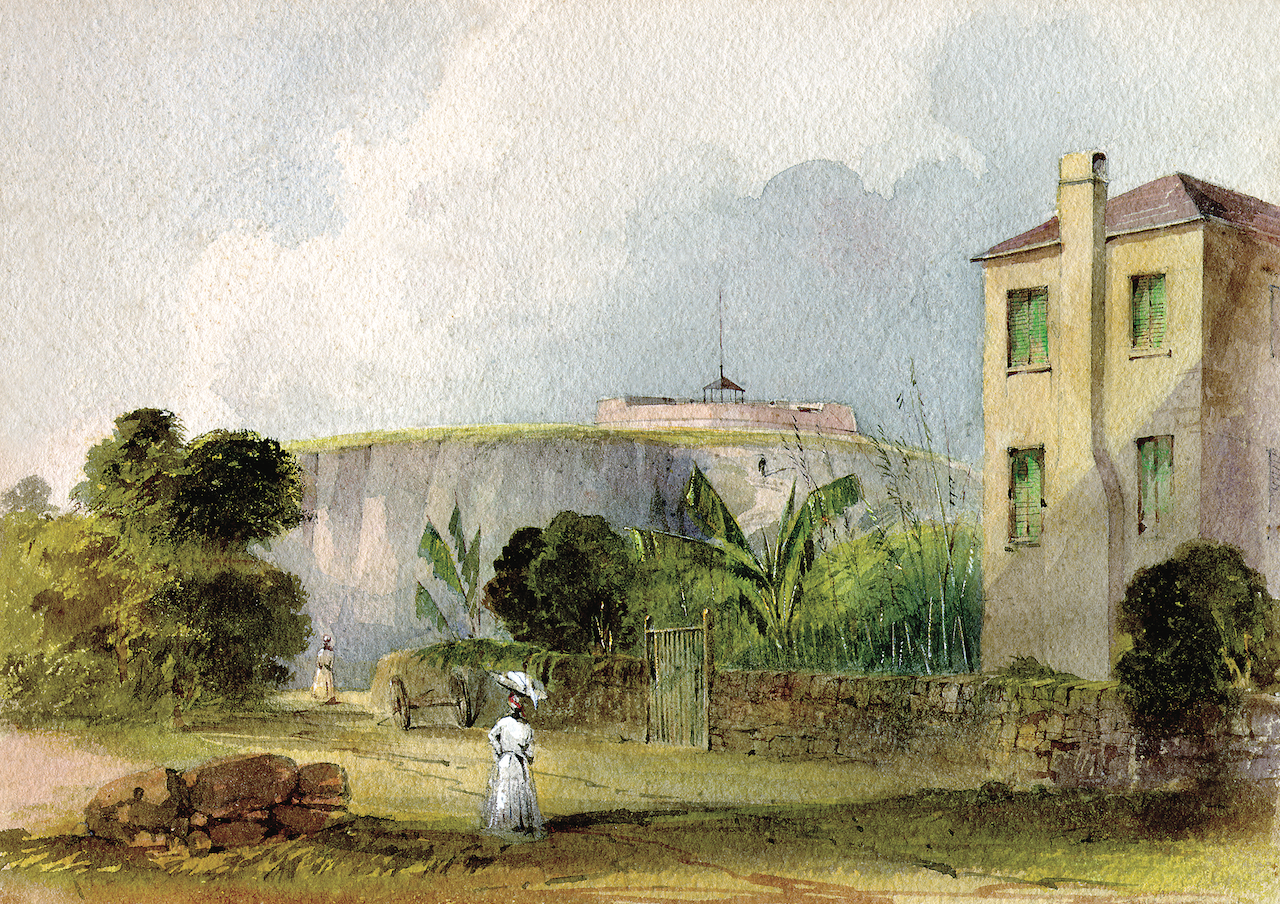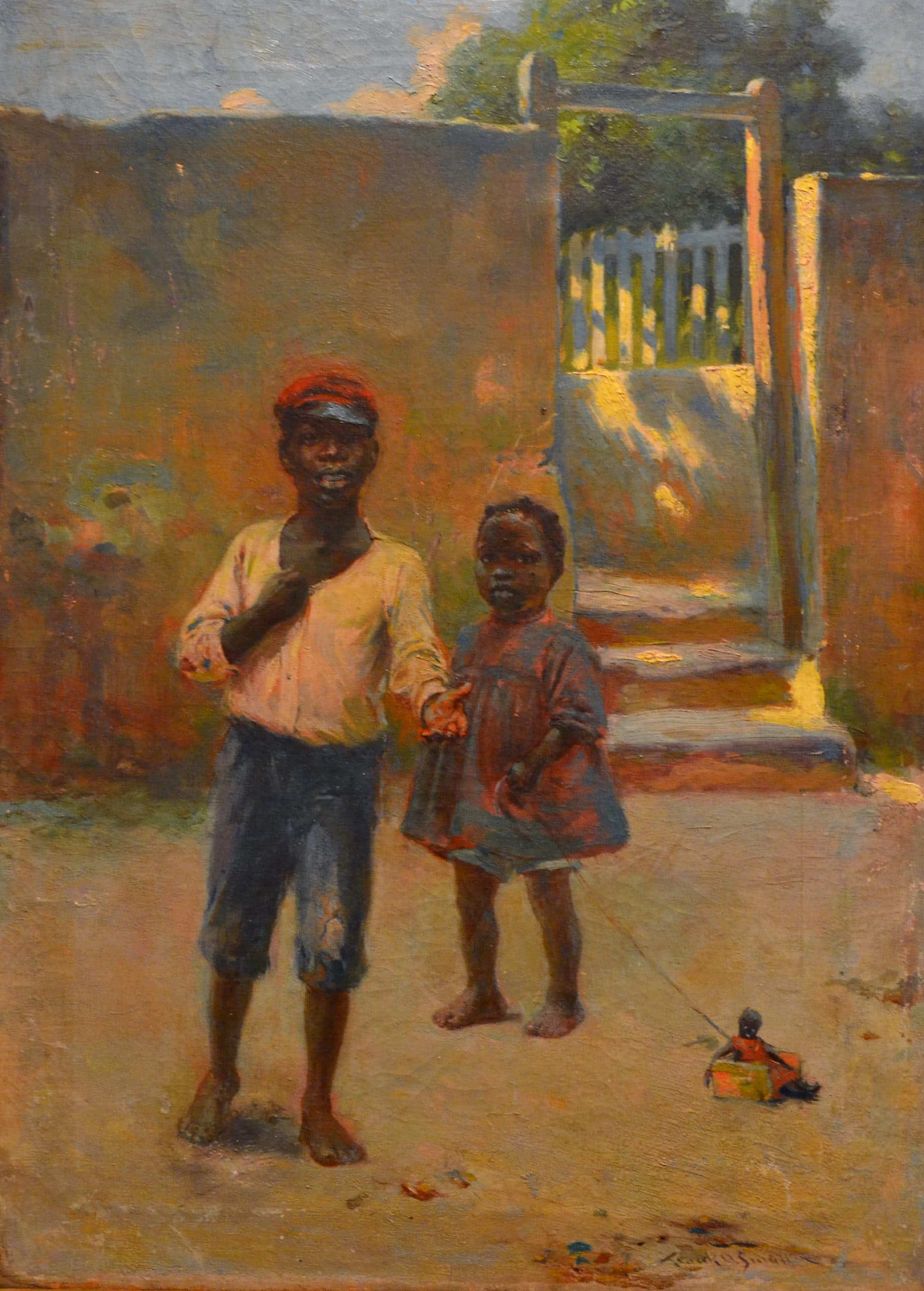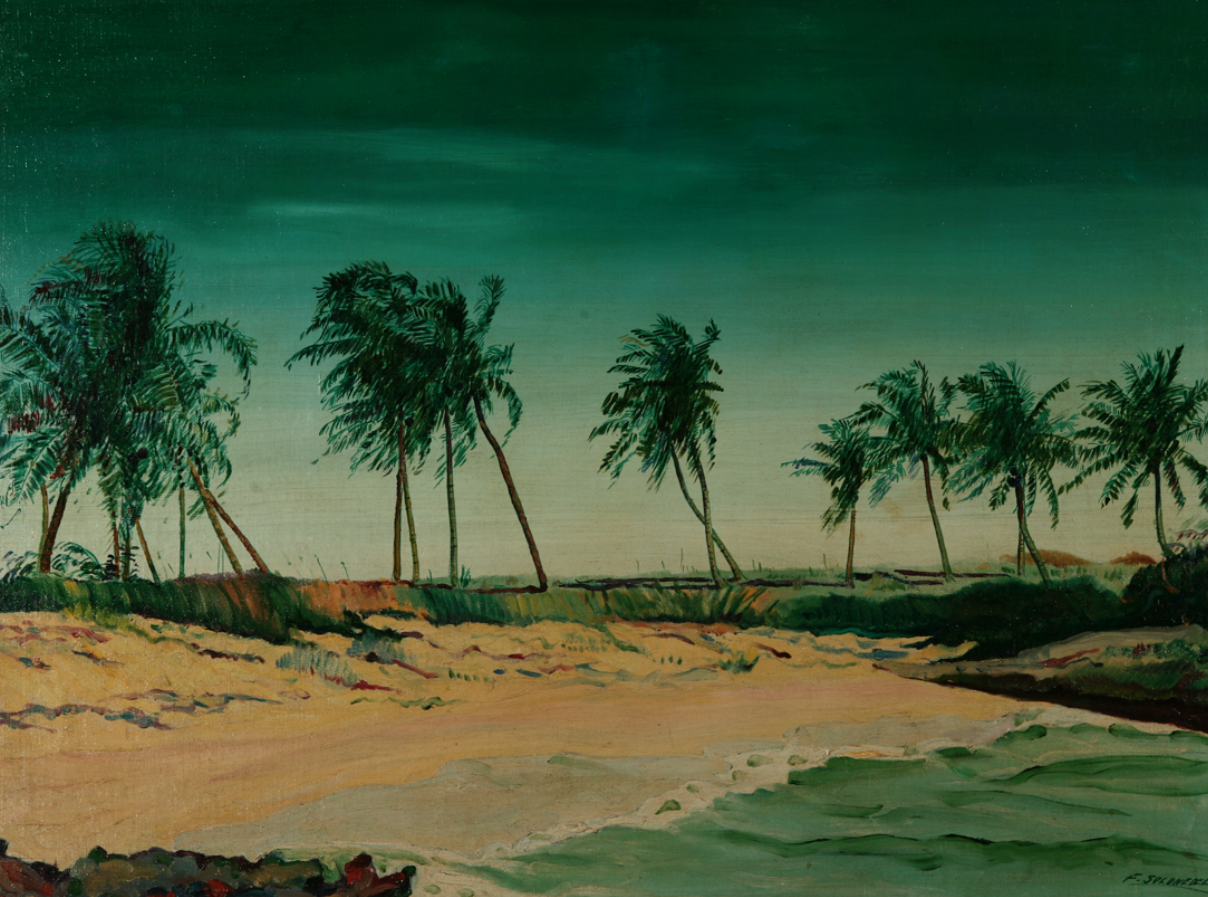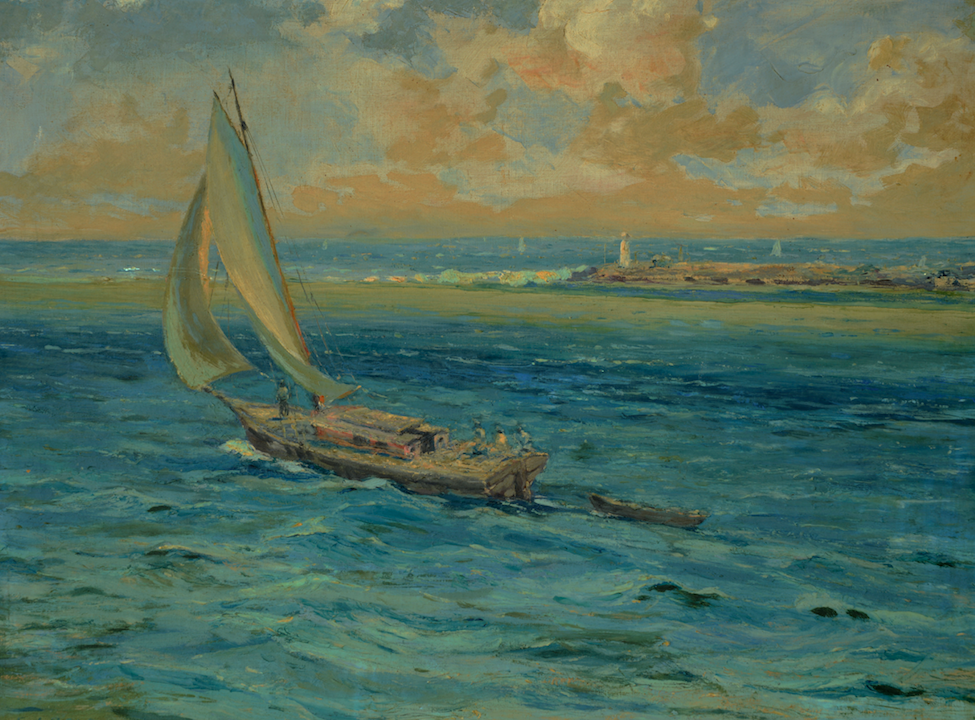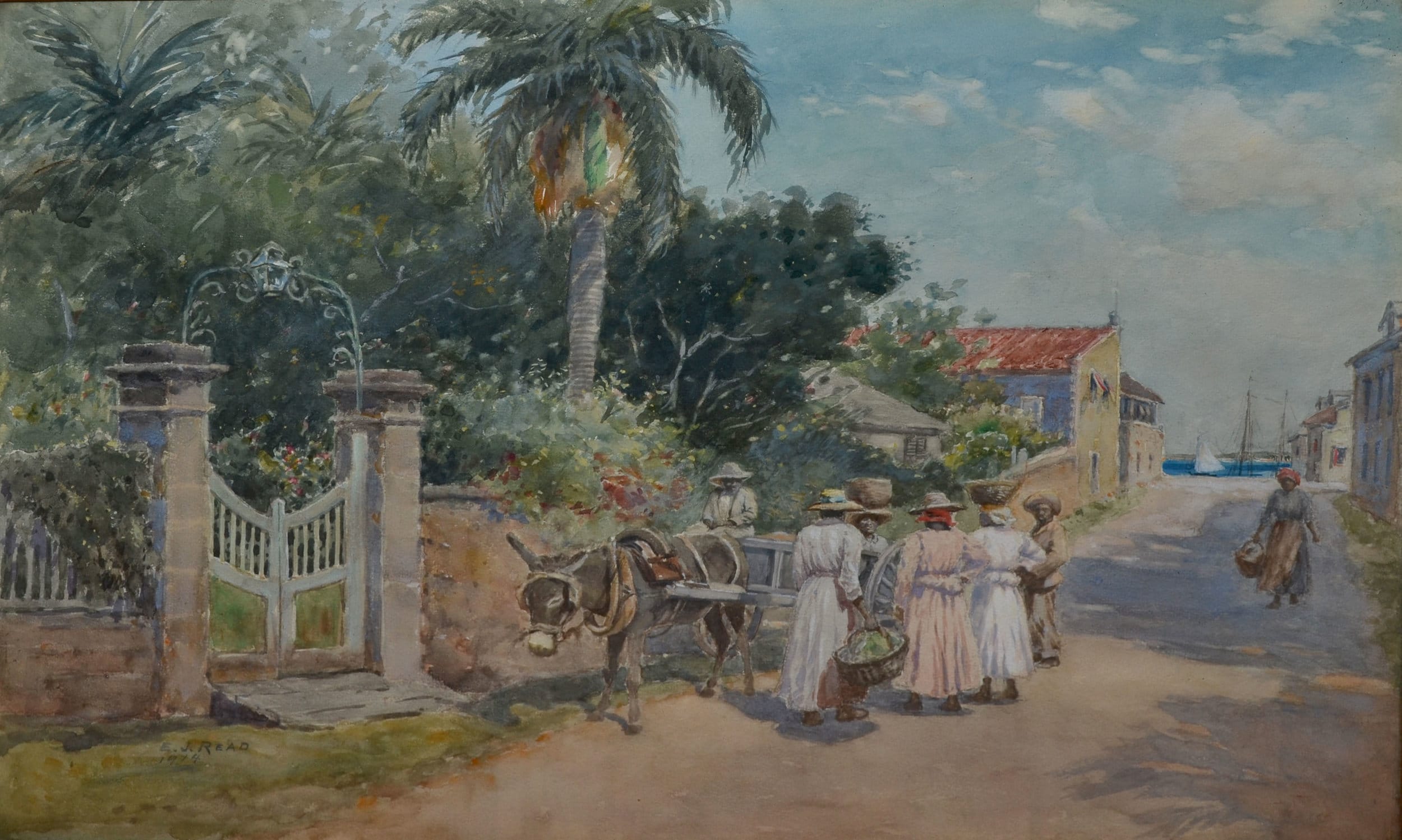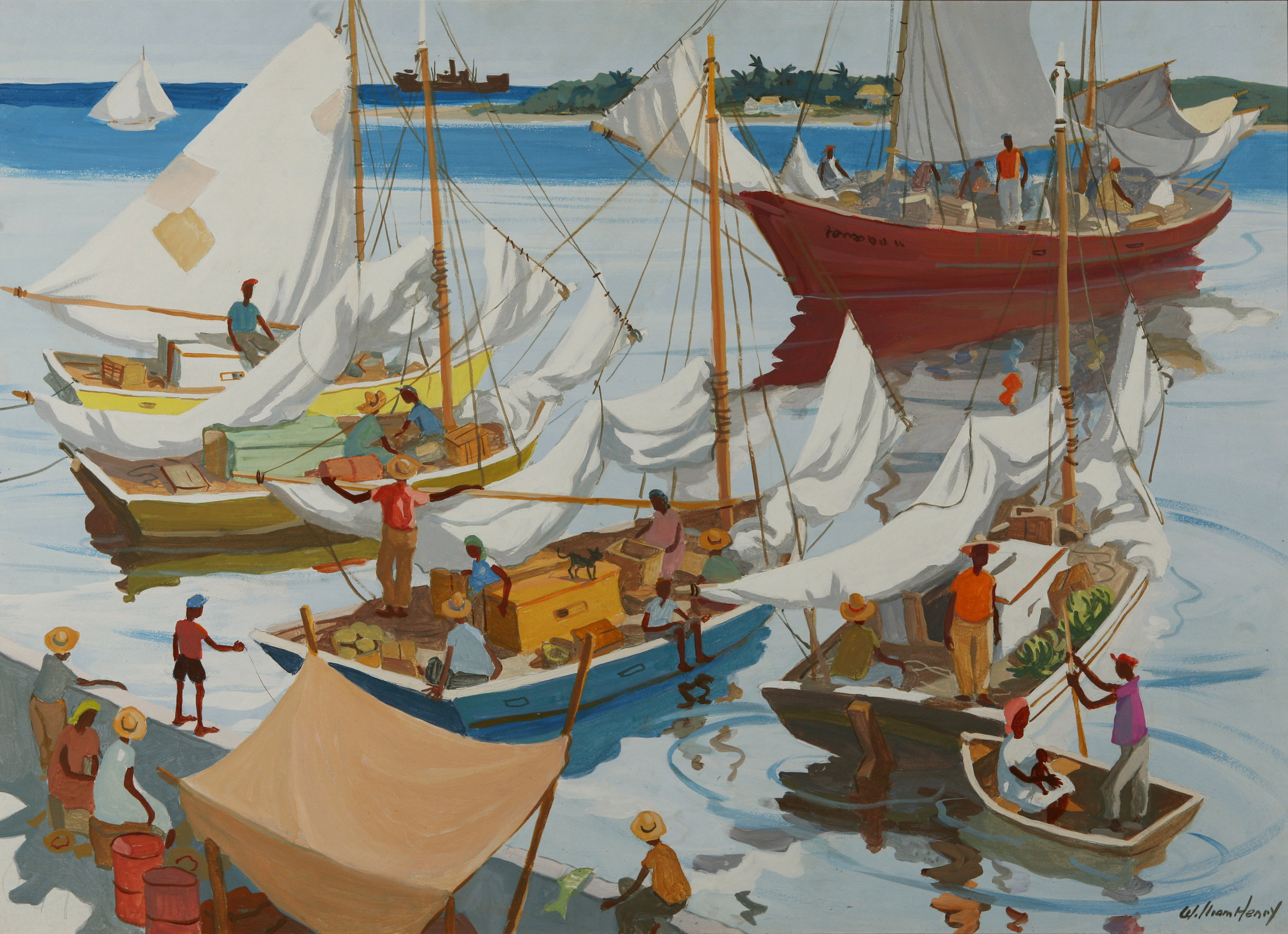By Natalie Willis
Some visitors aren’t visiting, some are coming home.
Considering the development we know of Nassau today, West Hill Street doesn’t look quite so different today as it does in Hildegarde Hamilton’s works. Though the date is not signed to the painting, we can tell it shows a different Nassau than the one we know now. Just in the last few years West Hill Street has taken on a series of colourful changes, particularly around Graycliff, as part of the Historic Charles Towne group. That being said, it may still be unusual to see a woman walking around with a parasol, the bougainvillea growing wildly over, and the road in better condition–and perhaps even unpaved–than it had been just a few years ago. It’s a comfort to think that maybe potholes haven’t always been quite so treacherous.

